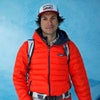EverestŌĆÖs Darkest Year
The true story of the mountain's most horrific day, the Sherpas who paid the price, and the aftershocks that will change the mountain forever
New perk: Easily find new routes and hidden gems, upcoming running events, and more near you. Your weekly Local Running Newsletter has everything you need to lace up! .
At 3 A.M., Lhakpa GyalgenŌĆÖs alarm went off at Base Camp, but he dozed until 3:07, when Tenzing Chottar rattled his tent fly. ŌĆ£He had been reading holy books and prayers,ŌĆØ said Lhakpa Gyalgen, who is from Thame, in Nepal, and was a lama at KathmanduŌĆÖs Kopan monastery before becoming a climber. Tenzing Chottar, 27, grew up in Ylajung, a mile up the Bhote Kosi River from Thame, and had a wife and a four-month-old boy. Lhakpa Gyalgen, 30, also had a young son, a two-year-old born blind. He and Tenzing Chottar lived near each other for most of the year in KathmanduŌĆÖs Sambala neighborhood.
Lhakpa Gyalgen, who is five foot nine, with closely set eyes that have trouble focusing, had worked on Mount Everest for several years, but this was Tenzing ChottarŌĆÖs first expedition. Physically, he was just rightŌĆöshort, strong, and energeticŌĆöbut in the Himalayas, thereŌĆÖs no substitute for experience.
ŌĆ£HeŌĆÖd climbed trekking peaks, but heŌĆÖd never been to the big mountains,ŌĆØ said Lakpa Rita, the longtime sirdar, or Sherpa foreman, for Seattle-based Alpine Ascents International, one of the top guiding companies working the south side of Everest.
The plan was for the two men to stay close on the way up. ŌĆ£Tenzing Chottar was new, but I was new, too,ŌĆØ said Lhakpa Gyalgen. ŌĆ£I have been three or four times, but the first day is always difficult for me. I couldnŌĆÖt walk well, so we walked together.ŌĆØ
Ten Sherpas clipped to the same line as Dawa Tashi had received fatal, bone-crushing blows, and the avalanche piled them into a stack that became their communal grave.
On that morning, April 18, Lakpa Rita had 27 Sherpas gearing up to carry loads through the Khumbu Icefall, most of them from his home village of ThameŌĆöor from one of several other small villages, consisting of a few dozen houses each, that hug the plunging downward path of the Bhote Kosi. For the 2014 climbing season, had been hired by the Discovery Channel to provide logistical support for its live broadcast of BASE jumper Joby OgwynŌĆÖs attempt to do a wingsuit flight off EverestŌĆÖs summit. (Ogwyn himself was to be guided by , launched this year by Alpine AscentsŌĆÖ former head guide Garrett Madison.) Lakpa Rita also had 12 paying clients trying to reach the top.'
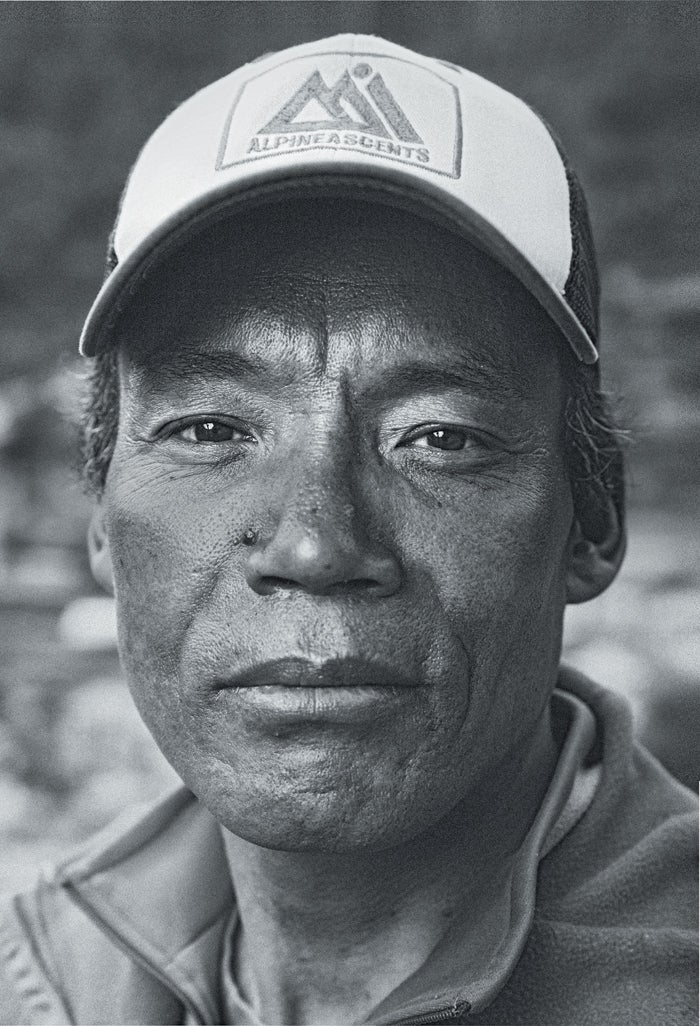
Lakpa RitaŌĆöwho is 48 and has the small, wiry frame of an endurance athleteŌĆöand his younger brother Kami Rita, his chief lieutenant, had long since earned the right to sleep until sunrise: between them, they had 37 Everest summits. Among the men working for them that day was Ang Tshering, who at 56 was the oldest of the crew. HeŌĆÖd been the Camp II cook for more than 20 years and had just completed construction on a teahouse in the village of Thamo for his retirement.
IŌĆÖd met Ang Tshering on a reporting trip to Thame in the fall of 2012. HeŌĆÖd spoken proudly about the famous Lakpa RitaŌĆöŌĆ£the great sirdar,ŌĆØ he called him, who ŌĆ£rescues on all expeditions, always.ŌĆØ HeŌĆÖd told me how Lakpa Rita had dug out and saved his younger son Mingma that summer, after an avalanche on Manaslu that killed 11 people. For 2014, Ang TsheringŌĆÖs last season, he had to make just one lap through the treacherous Icefall at the startŌĆöup to Camp II at 21,300 feetŌĆöand a return trip at the end.
Ang Tshering started out with his son Pemba Tenzing, who is 36, and the younger man quickly moved ahead. Then, from the other outfits in camp, came more than a hundred bobbing headlamps, almost all of them Sherpas converging on the route.
The Khumbu Icefall is the first major obstacle to climbing Everest and one of the mountainŌĆÖs most relentless killers. Over time, as it migrates downhill from Camp I (19,900 feet) to Base Camp (17,600) at a rate of a few feet per day, the Khumbu Glacier fractures into towering columns, crumbling ice ledges, and deep crevasses that are constantly moving and whose walls are prone to collapsing. Each year, a group of Sherpas known as the Icefall Doctors are hired by NepalŌĆÖs government, through the Sagarmatha Pollution Control Committee. The Doctors are responsible for a single, dangerous job: snaking a route through the Icefall, stringing ropes and placing aluminum ladders over the crevasses and up the cliffs.
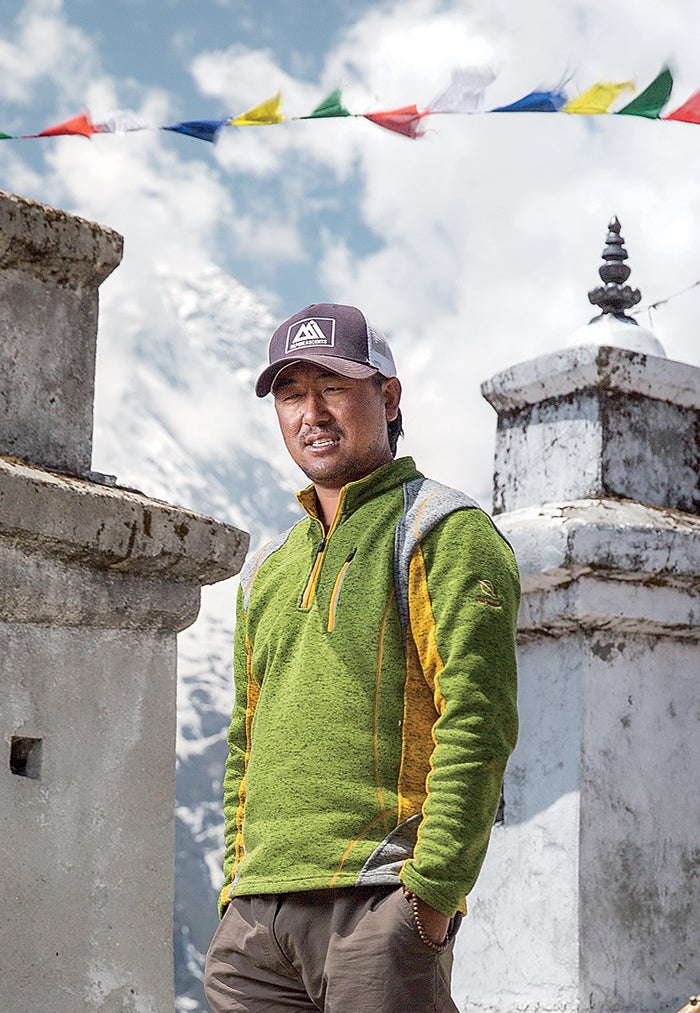
Rising directly above the Icefall is EverestŌĆÖs west shoulder, a mile-high face that supports a giant hanging glacier. As that glacier creeps downward, it regularly calves, sending ice blocks rocketing toward the route. In recent years, the route to Camp I has run up the left side of the Icefall, directly under the overhang, because of unstable conditions through the middle.
Around 6:30 A.M., Tenzing Chottar and Lhakpa Gyalgen reached the top of a series of flat benches, at about 19,200 feet, known as the football field, where the terrain begins to roll. A triple ladder, laced together with the ubiquitous cheap Korean rope that lines much of the route, led up an ice cliff to a knoll. On the other side was a descent to two more ladder crossings balanced on narrow ice pillars, where the glacier flaked apart over a 100-foot chasm. Pemba Tenzing was in the first group to reach these ladders, one of which had been damaged by falling ice. The lead Sherpas put down their packs and set about repairing the ladder while a queue of people formed behind them.
ŌĆ£When I reached the spot, people were saying, ŌĆśIn the mountains, you have to stand in line, just like in Kathmandu for petrol,ŌĆÖŌĆēŌĆØ Lhakpa Gyalgen recalled. ŌĆ£They were taking photographs.ŌĆØ
Things were soon moving again, but the backup would take time to clear. There were more than 100 Sherpas strung through the top half of the Icefall, with the majority having already passed the bottleneck. Lhakpa Gyalgen crossed the ladders and looked back. Ang Tshering was on top of the rise, among a cluster of a dozen people, waiting his turn to cross. He waved. Nima, a Sherpa working for Alpine Ascents, was on a ladder taking a photo with his cell phone, and Tenzing Chottar had just stepped off.
At that moment, a quarter of the way up the west shoulder, an ice chunk the size of a ten-story apartment building peeled off and fell. In Madison MountaineeringŌĆÖs communications tent, Base Camp manager Kurt Hunter was on the radio with his sirdar, Dorjee Khatri. He heard the rumble from above, then a scream over the air, then nothing.
What came crashing down on the men that day was an avalanche only in the sense that it involved frozen water. Beyond that, it more closely resembled a comet.
When the serac calved off, it initially fell as a mostly solid chunk of blue ice. A Chinese client with the outfitter later analyzed before and after photos of the missing piece of glacier and estimated its size to be 130 feet wide, long, and tallŌĆönearly 2.3 million cubic feet, weighing 64,000 tons. The ice block was roughly 1,300 feet above the route, and by the time it had finished crashing down EverestŌĆÖs west shoulder, it hadnŌĆÖt just pulverizedŌĆöit had detonated, blasting loose scree and even bedrock as it roared over the slope with unimaginable fury.
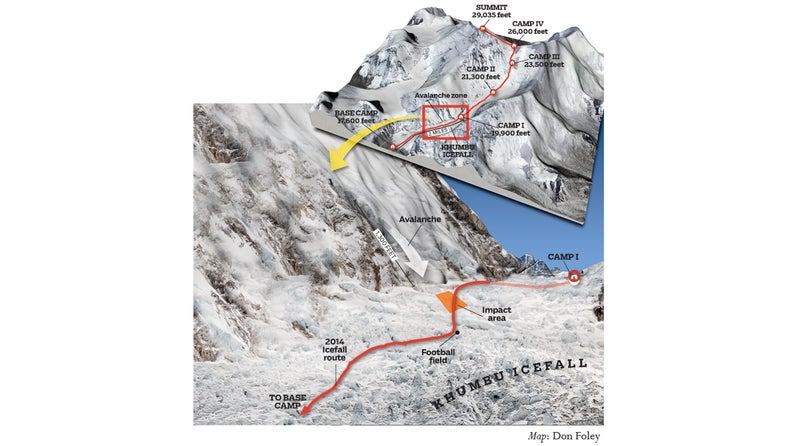
╠²
For the men in the Icefall, there would have been a soul-chilling gap between the sound of the ice blockŌĆÖs releaseŌĆöa solid kerchink, like railroad cars uncouplingŌĆöand a brief moment when it actually sailed through the air. Then all hell broke loose as the serac exploded and re-exploded, vaporizing the ice into fine, aerosolized crystals, recruiting new projectiles from the slope below until it resembled a thrumming white cloud of boulders and grapeshot.
As the April 18 disaster unfolded, many of the menŌĆöboth the survivors and the 16 who diedŌĆöprobably heard a sound like a rolling thunderclap. Others who survived said they heard nothing, but everybody surely felt what was coming. From a distance, a big avalanche on Everest can be mistaken for an earthquake: the low waves produced by the tumbling mass arenŌĆÖt just audible but palpable. Between the first sound and the final impact, those below had about ten seconds to react.
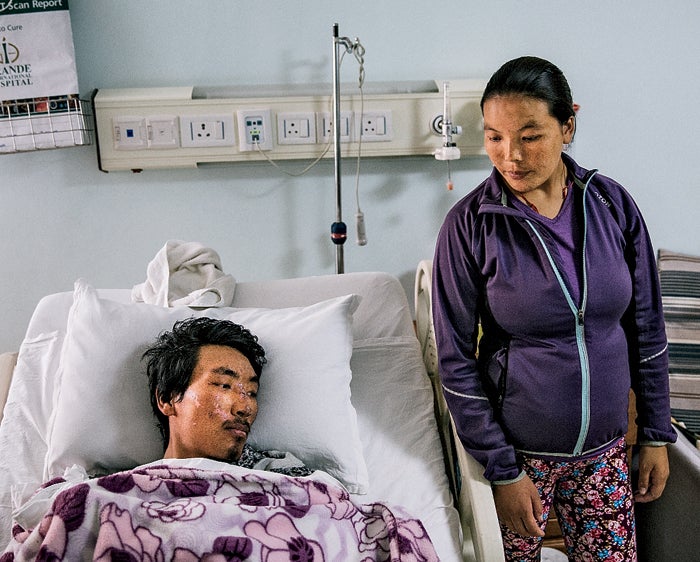
Lhakpa Gyalgen said he ran uphill ŌĆ£very fastŌĆØ and grabbed onto Pasang Dorje, another Alpine Ascents Sherpa. The two turned sideways behind a narrow fin of ice that offered some degree of protection. Lhakpa GyalgenŌĆÖs chest was sticking out just a bit, and a fist-size piece of ice whizzing past pierced his down jacket and poofed feathers into the air, as if from a shotgunned game bird. The Chinese thermos that Pasang Dorje carried in his pack was crushed by the impact from an ice chunk, but he was unhurt.
ŌĆ£I donŌĆÖt know how my back was saved,ŌĆØ Lhakpa Gyalgen said later, when I interviewed him in Namche Bazaar. ŌĆ£I had a big bag, inside which I had cashews and rice that IŌĆÖd offered at the puja,ŌĆØ a religious ceremony held by each team before the beginning of a climb. Four other men whoŌĆÖd cleared the worst of the blast zoneŌĆöWongdi, Mingma, Mingma Tshering, and a lowlander named RakeshŌĆöwere bruised and lacerated but otherwise all right.
On the mountain, amid the scrum of porters, was a Sherpa named Dawa Tashi, who was working for UK-based Jagged Globe. When everyone else turned away and crouched, Dawa Tashi stood his ground. As he later described it from a hospital bed in Kathmandu, he counterintuitively aimed his chest directly toward the avalanche, taking blows to the torso and head. ŌĆ£I remembered my wife in Kathmandu,ŌĆØ he said. ŌĆ£I remembered my parents. Then I was knocked out.ŌĆØ
At the time of the avalanche, two ╣·▓·│į╣Ž║┌┴Ž Consultants Sherpas, Kaji and another young man named Chhewang, were also getting ready to cross the ladder, behind Nima and Tenzing Chottar. They saw a small overhang next to them, and Chhewang pulled Kaji behind it.
ŌĆ£There was a little hill-like structure that broke off and fell straight down and broke into pieces,ŌĆØ said Kaji, who is from Taksindu, below Lukla, the town where most people fly into the Khumbu region. In the next moments, he likely witnessed the death of either Nima or Tenzing Chottar. ŌĆ£One person ahead of me was blown off the top and thrashed below,ŌĆØ he said. ŌĆ£It was like a thunderbolt. I realized what it was, but there wasnŌĆÖt a way out. It knocked me unconscious.ŌĆØ
Just below them was Madison MountaineeringŌĆÖs sirdar, Dorjee Khatri, who was standing at the top of the triple ladder, talking into his radio. The main avalanche hit and buried him boots up. It also knocked loose more ice that killed one of MadisonŌĆÖs Sherpas, Phur Temba, at the bottom of the triple ladder.
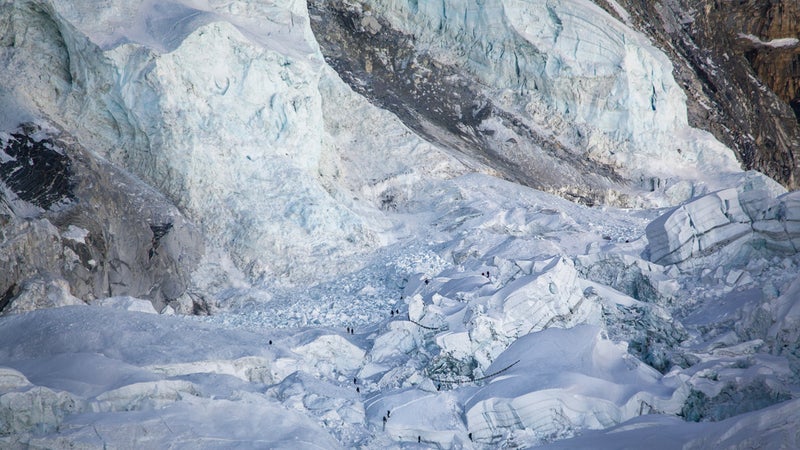
In Base Camp, Alpine AscentsŌĆÖ Michael Horst, a veteran American guide living in British Columbia, had just woken up when he heard the crash and rumble. ŌĆ£I opened the tent door, looked toward the south to the moon, and then heard the initial fall of the avalanche and watched it sweep across the route,ŌĆØ he said. ŌĆ£I realized right away that there was almost no way people werenŌĆÖt involved.ŌĆØ
Horst ran to Lakpa RitaŌĆÖs tent and shook the nylon to wake him. Lakpa Rita kept a handheld radio nearby at all times, and he switched it on. When he made contact with Lhakpa Gyalgen, he said, he was quickly told that ŌĆ£a terrible thing has happened up here.ŌĆØ
Horst next roused his Base Camp manager, Joe Kluberton, who would coordinate radio traffic, and U.S.ŌĆōbased guides Andy Tyson and Ben Jones. From there, news spread to a few guides from other camps who frequently assist on rescues, like Argentine Damian Benegas, of Benegas Brothers Expeditions, Rainier MountaineeringŌĆÖs Dave Hahn, and the crew at (IMG), who had several clients and Sherpas on the football field when the avalanche hit. By the time these men had gathered, Lakpa Rita and Kami Rita were already on the trail. Getting from Base Camp to the impact zone involved a hike of 1,600 vertical feet, which at that altitude took Lakpa Rita and his brother 90 minutes to cover.
Up in the Icefall, the surviving Sherpas were in shock but were making rational emergency assessments. The wave of pulverized ice swept over them with a blast of wind, coating every man in ghostly white. The powder cloud stretched across the entire width of the Icefall and dampened any sound waves, producing an eerie blizzard of silence.
Sherpas believe that the spirit lingers close to a dead body for three weeks. Any climber lost in a crevasse is thought to have a restless ghost loitering nearby.
ŌĆ£I was holding on to Pasang DorjeŌĆÖs bag, so we shook it off and found the radio,ŌĆØ said Lhakpa Gyalgen. ŌĆ£Both of us had turned white with the ice.ŌĆØ They told Lakpa Rita that a disaster had taken place. Their gear had been destroyed, and they needed help.
ŌĆ£I said, ŌĆśDonŌĆÖt worry about all the gear,ŌĆÖŌĆØ Lakpa Rita said. ŌĆ£ŌĆśJust take care of yourself. If itŌĆÖs not safe to stay there, move away.ŌĆÖŌĆØ
The towers that had braced the two upper ladders were now filled in with avalanche debris, but they still contained dangerous gaps. Tenzing Chottar had been swept away, as had Nima, and there was no telling how many others were dead. They moved downhill, over the debris, and back up onto the hill where Ang Tshering had waved at them.
ŌĆ£I saw someone whose body was half in the ice, and vapor was coming from his mouth,ŌĆØ said Lhakpa Gyalgen. Pasang Dorje shouted, ŌĆ£ThereŌĆÖs Tenzing!ŌĆØ but it was Dawa Tashi, who was alive and unconscious. They kept moving. Twenty or thirty yards farther down, Lhakpa Gyalgen and Pasang Dorje came to the edge of the cliff that had been served by the triple ladder. ŌĆ£I peeked down and saw the ropes cut. I saw a leg hanging,ŌĆØ he said. This was MadisonŌĆÖs sirdar, Dorjee Khatri.
Dawa Tashi came to on the hill after a few minutes. ŌĆ£There were about ten of us, but when I regained consciousness I was the only one thereŌĆöwith half my body in the snow,ŌĆØ he said. ŌĆ£No one was crying. Everyone was buried.ŌĆØ He was encased in ice and could see in only one direction.
ŌĆ£I cried and shouted, but after no one came soon, I started to dig myself out,ŌĆØ Dawa Tashi continued. ŌĆ£I used my right hand to dig out my left hand.ŌĆØ He tried to stand, but his harness was still clipped into the fixed line, which was buried in debris. He had suffered four broken ribs and a broken scapula.
The area quickly filled with people who had descended from Camp I and from higher up in the Icefall to help. Madison MountaineeringŌĆÖs Jangbu Sherpa, a 32-year-old who divides his time between Nepal, the U.S., and South America, began to assist Dawa Tashi. ŌĆ£We started digging him out, and he was conscious,ŌĆØ said Jangbu. ŌĆ£He recognized us.ŌĆØ
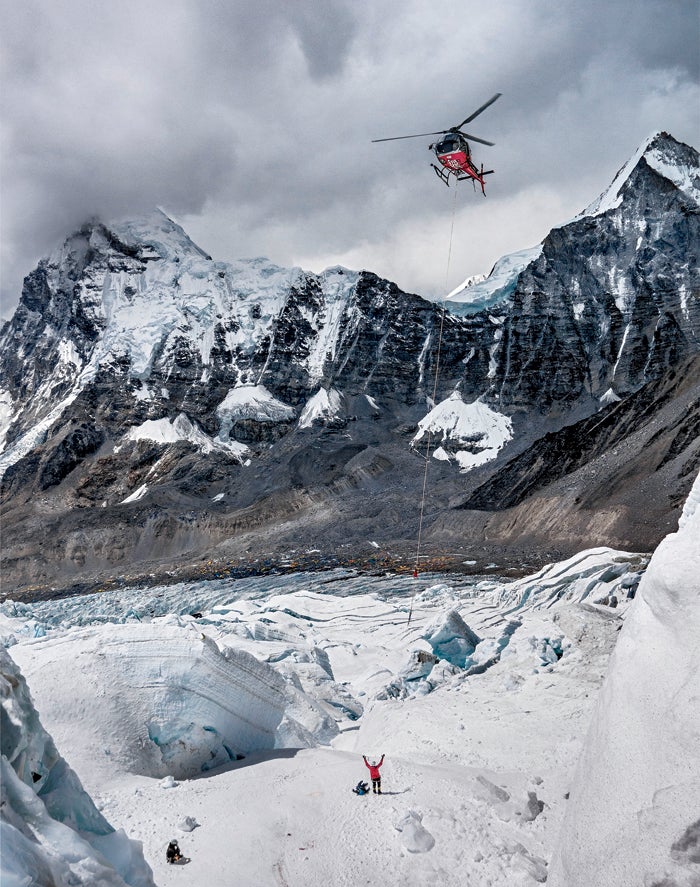
Lhakpa Gyalgen, Pasang Dorje, and several others still needed to climb down the triple ladder on the back side of the hill, which had also been damaged. A Sherpa named Wongdi, who worked for Jagged Globe and was bleeding from his right ear, slid down the fixed line with his gloved hands and then leaped for the bottom. ŌĆ£When he came down, it created a big sound, and I was very scared,ŌĆØ said Lhakpa Gyalgen. ŌĆ£Some people jumped off, but I couldnŌĆÖt jump.ŌĆØ Eventually, though, he did.
Kaji regained consciousness higher up, near where the pillar ladders had been, and radioed Base Camp. ŌĆ£I was buried in the snow, hit by the hump, but I wasnŌĆÖt fully buried like those who died,ŌĆØ he said. His friend Chhewang was panicked but alive. (In a cruel twist, ten days later, Chhewang was killed by lightning back in his home village of Nunthala.) ŌĆ£One guy who was strong carried me on his back,ŌĆØ said Kaji. ŌĆ£It hurt even more.ŌĆØ His rescuer laid him down near the top of the hill, above the triple ladder, where most of the others had been buried. HeŌĆÖd suffered two broken ribs.
As other rescuers arrived, Lhakpa Gyalgen and Pasang Dorje retreated. ŌĆ£I wanted to stay, but I couldnŌĆÖt, as I was shivering badly,ŌĆØ Lhakpa Gyalgen said. ŌĆ£Others were taking out the dead bodies.ŌĆØ
Within minutes, more rescuers whoŌĆÖd been above the avalanche started to arrive, but as of 7:36 A.M. the trail up to the accident site was still inaccessible from below. Justin Merle and Max Bunce, both from IMG, had been in Camp I when the avalanche hit, and they quickly mobilized and headed down. Lakpa Rita called Ang TsheringŌĆÖs son Pemba Tenzing and Tenzing ChottarŌĆÖs brother, Fura Tenzing. He asked them to grab the heavy landscaping shovels from Camp I and hurry down to the avalanche field.
Pemba Tenzing remembers being struck by the sight of abandoned backpacks along the trail. ŌĆ£I only saw bags, a lot of bags, but nobody was there with the bags,ŌĆØ he said. Then he rounded the corner to the impact zone, which was 100 feet wide where it crossed the route. He saw Jangbu Sherpa and several others working to free Dawa Tashi.
By 8:12, Merle, Bunce, and Austin Shannon, another IMG guide, had reached the three most seriously injured survivors. Bunce took charge of the effort to rescue Kaji; Dawa Tashi, who was the worst off, was aided by Merle; another Sherpa, Ang Kami, who worked for IMG and was able to walk to the football field before collapsing, was looked after by Shannon. Kluberton had radioed at 7:57 to let the rescuers know that helicopter pilot Jason Laing, a gruff New Zealander who works for NepalŌĆÖs Simrik Airlines, was en route with a long-line-equipped heli but would take two hours to reach them.
ŌĆ£An IMG guide had come with a doctor, and another group brought me oxygen and a stretcher,ŌĆØ said Kaji, referring to Dr. Rob Casserley, who was attached to the expedition led by Henry Todd, a longtime outfitter from the UK. ŌĆ£They put me on the stretcher,ŌĆØ Kaji said. ŌĆ£Some of them were making the helipadŌĆØŌĆömarking a big H in the snow by pouring out lines of red sports drinkŌĆöŌĆ£while some stayed by my side. They gave me warm water to drink. I was shivering, my hands and legs had turned blue. They massaged my hands and feet and gave me new gloves to wear. My body gradually began to warm.ŌĆØ
Just below them, Jangbu Pemba Tenzing and Fura Tenzing finished digging out Dawa Tashi. Beneath him, in the hole heŌĆÖd just been pulled from, they saw something horrifying and unforgettable: another set of legs. As they uncovered that man, there was another below him, then another, then another. Ten Sherpas who had been standing near Dawa Tashi had all been clipped to the same line he was. They had received fatal, bone-crushing blows, and the avalanche piled them into a stack that became their communal grave. Only Dawa Tashi, who was beaten up but stayed at the surface, survived.
In Base Camp, Kluberton and the radio operators at ╣·▓·│į╣Ž║┌┴Ž Consultants and Jagged Globe were struggling to figure out who was missing. By 8:25, Alpine Ascents knew that five of its Sherpas were unaccounted for: Nima, Tenzing Chottar, Ang Tshering, Mingma Nuru, and Dorji. ╣·▓·│į╣Ž║┌┴Ž Consultants soon reported that it had lost three men (Phurba Ongel, Chhiring Ongchu, and Lhakpa Tenjing) and that oneŌĆöKajiŌĆöwas unable to walk. But it took several more hours for the full scale of the tragedy to become apparent.
When Lakpa Rita arrived at the scene with Kami Rita at about 8:45, Jangbu Sherpa, Pemba Tenzing, and eight or nine others had already found four bodies. The men had only had time to cover their faces with jackets and neck gaiters before they were killed.
Pemba Tenzing began the grim task of identifying his father, Ang Tshering, who was the seventh body found in the hole. ŌĆ£I recognized him by his shoes,ŌĆØ he said later. Once he was certain his father was gone, he decided to leave the scene. ŌĆ£I came back to camp quickly, phoned my mother, and left with money for the monks from Thame.ŌĆØ Sherpas believe that an elaborate funeral, with many displays of devotion, will help lead to a better rebirth for their loved one. Pujas, which are also held after deaths, often cost several thousand dollars.
At 9:09, Damian Benegas, who reached the accident site just ahead of Lakpa Rita, reported that heŌĆÖd counted ten dead. Before dayŌĆÖs end, the total would rise to 13 confirmed dead, with Pem Tenji, Gurung Ashbadur, and Tenzing Chottar still missing. The others who perished were Ang Kaji, a second Sherpa named Dorjee, Phur Temba, Pasang Karma, and a second lowlander, Asman Tamang. All the men died from either blunt-force trauma or suffocation.
In the slide zone, Horst joined Merle in the task of caring for Dawa Tashi. They packaged him into a stretcher and, on the advice of a doctor in Base Camp, gave him eight milliliters of dexamethasone, a fast-acting steroid that can help trauma patients overcome shock.
At 10:05, after landing in Base Camp and picking up American climber Melissa Arnot, a paramedic, and ╣·▓·│į╣Ž║┌┴Ž Consultants guide Dean Staples, Laing set his heli down in the football field. He retrieved IMGŌĆÖs Ang Kami, then ╣·▓·│į╣Ž║┌┴Ž ConsultantsŌĆÖ Kaji, returning each man to Base Camp helipads before equipping the craft for the long-line rescue of Dawa Tashi, whose perch between two steep walls didnŌĆÖt allow for a landing.
Once he was in Base Camp, Dawa Tashi received rapid and effective emergency treatment. ŌĆ£The anesthetist began looking after his airway and the head and facial injuries and we cut him out of his wet down suit, got a drip in, gave morphine and performed an abdominal ultrasound,ŌĆØ wrote ╣·▓·│į╣Ž║┌┴Ž Consultants doctor Sophie Wallace on the website ╣·▓·│į╣Ž║┌┴Ž Medic. ŌĆ£He had bruising all across his lower abdomen from where the harness had stopped his fall, just like a seat belt injury in a car crash.ŌĆØ
By 10:49, the three severely injured survivors had been evacuated and were en route first to Pheriche, then to Lukla, then, by low-altitude heli, to Kathmandu for treatment.
The Rescue mission now switched to body-recovery mode, a dangerous proposition since the glacier wasnŌĆÖt any less likely to calve. Dave Hahn arrived from Base Camp at about 11. He and Andy Tyson had heard a report that there may have been a pair of legs sticking up through the snow.
ŌĆ£We got to the lowest extent of the debris, and we could see a glove on the snow and a backpack attached to someone,ŌĆØ said Tyson. While Hahn and his crew went off to investigate, Tyson climbed the triple ladder, now repaired, and found a lone boot, the leg inside it fractured badly, sticking out of the ice. It was Dorjee Khatri. His body heat had melted the snow around him, which then refroze.
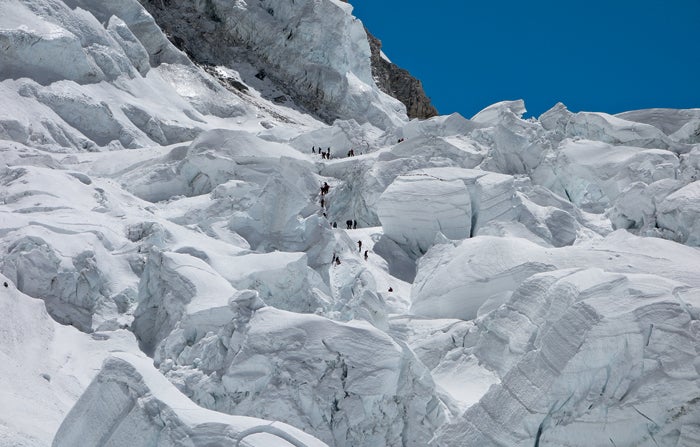
Tyson, Garrett Madison, and Ben Jones chipped carefully around Dorjee KhatriŌĆÖs body with the adzes of their ice axes, but by 2:30 P.M. they still hadnŌĆÖt freed him, so they had to come back the next day. The weather was deteriorating, and New Zealander Russell BriceŌĆöfounder of Himalayan Experience, who was coordinating heli flights from Base CampŌĆötold them they should stop for the day if they wanted to fly down.
Below them, Hahn guided in the last body-recovery flight of the day, raising his arms in a Y signal to bring the long line down to him. Watching from Base Camp, Dr. Wallace reflected on the horror of the flights. ŌĆ£The lifeless bodies hanging from below the chopper, still with their helmets and crampons broke my heart,ŌĆØ she wrote. ŌĆ£We initially thought that confirming death in profoundly hypothermic patients might pose some problems, but the extent of some of their injuries made it depressingly easy.ŌĆØ
Once heŌĆÖd done all he could, Lakpa Rita walked wearily down to Base Camp. ŌĆ£When I got to the lower helipad,ŌĆØ he said, ŌĆ£all the boys were lined out and they had badgesŌĆØŌĆöpieces of duct tape, with names written on them, identifying the corpses.
To reach the Khumbu region of Nepal, climbers typically fly the 85 miles from Kathmandu to the mountainside airstrip at Lukla. Below Lukla, which sits at 9,000 feet on the Dudh Kosi River, are foothills and lowlands. Above it, the trail to Everest slants upward along the Dudh Kosi, past Namche Bazaar (12,000 feet), the monastery at Tengboche (12,700 feet), Pangboche (13,000 feet), and Pheriche (14,000 feet), before leaving the river and climbing onto the Khumbu Glacier just below the tiny seasonal outposts of Lobuche (16,000 feet) and Gorak Shep (16,900 feet). The Thame Valley follows the Bhote Kosi River northward from Namche Bazaar toward Tibet, passing the towns of Phurte, Thamo, Thame, Ylajung, and Taranga, before the landscape gets too high for permanent settlement.
At Base Camp on the afternoon of April 18, Lakpa Rita jumped into a heli with Laing and made the five-minute flight to Pheriche. There, he was horrified to discover that a Nepalese army officer had confiscated ten of the bodies that had been recovered and that most of them had already been flown in the militaryŌĆÖs Super Puma helicopter to Lukla, where they were laid out on the tarmac in full view of tourists landing there to begin their trekking vacations.
ŌĆ£I was so upset,ŌĆØ said Lakpa Rita. ŌĆ£My people did not need to go to Lukla.ŌĆØ So he flew there and negotiated with an officer to let him take three of his four dead back up to their families in Thame. Lakpa Rita signed over the fourth, Nima, to his uncle and brother, who wanted to fly him to Kathmandu for his series of pujas. The other six Sherpas were flown to Kathmandu and given to their families.
Tenzing ChottarŌĆÖs body was never found, causing serious distress to his family in Ylajung, since that meant his soul might be wandering lost. After Lakpa Rita signed for his three menŌĆöAng Tshering, Mingma Nuru, and DorjiŌĆöhe flew back to Namche Bazaar, the Sherpa commercial capital, to meet Todd Burleson, co-owner of Alpine Ascents.
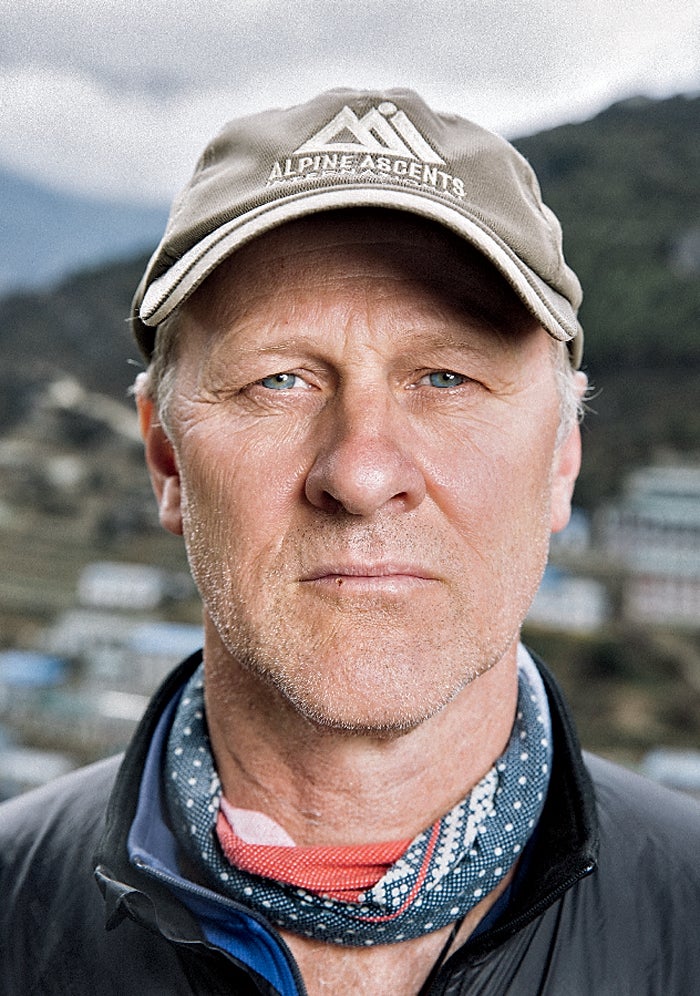
Burleson stood waiting on the helipad in Namche Bazaar. HeŌĆÖs bigŌĆösix foot threeŌĆöand graying now at 54. Like his employees, he constantly wears the logoed baseball cap of the guiding company he launched in 1986.
The hundred-foot-wide landing platform in Namche Bazaar, at 12,000 feet, is constructed without mortar, using granite hunks. When Lakpa Rita choppered into view, the pre-monsoon mists were already rolling across Thamserku and Kongde Ri, the 20,000-foot peaks above town, and a group of monks were on their way down the Bhote Kosi River trail from the monastery above Thame. The helicopter touched down, its rotors still spinning, and Lakpa Rita stepped out.
ŌĆ£I started to unload the dead bodies, and I got a hug from Todd,ŌĆØ said Lakpa Rita. ŌĆ£We were crying.ŌĆØ
ŌĆ£We hadnŌĆÖt seen each other since all this,ŌĆØ said Burleson, whoŌĆÖd been in Kathmandu when the avalanche hit. BurlesonŌĆÖs regard for Lakpa Rita, a naturalized U.S. citizen who lives most of the year in Seattle, is boundless. He calls the years theyŌĆÖve spent guiding together ŌĆ£the best partnership IŌĆÖve ever had.ŌĆØ
They laid out the bodies, and the heli took off. Ang Tshering, Mingma Nuru, and Dorji were bundled in their sleeping bags, which were wrapped in blue tarps laced shut with Korean rope.
ŌĆ£The police were asking us to take off their harnesses,ŌĆØ said Lakpa Rita. ŌĆ£I undid all the harnesses so the police could take pictures.ŌĆØ The officers inspected the bodies for wounds, to determine a cause of death that could be given to Kathmandu-based Shikhar Insurance as proof that each of the men had died in a climbing accident, qualifying his stated beneficiary for payment. During this two-hour process, the monks, in their red and saffron robes topped with polar-fleece jackets, began to arrive from Thame.
ŌĆ£Pemba Tenzing decided to take his father home that night,ŌĆØ said Lakpa Rita. ŌĆ£A bunch of monks came for Mingma Nuru and Ang Tshering. They had a stretcher, and they carried them to their houses.ŌĆØ Mingma Nuru lived a half-hour to the west, at a bend in the trail past Phurte. Ang Tshering lived in Thamo, 30 minutes farther on.
“There were a lot of people, maybe 18 or 19,” said Pemba Tenzing, ŌĆ£carrying turn by turn.”
That left the body of Dorji, who lived on the rocky flats of Taranga, half a dayŌĆÖs walk up the Bhote Kosi River from Namche Bazaar. ŌĆ£I didnŌĆÖt know whether his wife had even heard the message or not,ŌĆØ said Lakpa Rita. ŌĆ£So we brought him to the police station here.ŌĆØ
Some locals carried the body to a set of barracks. Lakpa Rita went to the monastery, where Lakpa Doma, who with her husband, Sherap, runs an inn called the Panorama Lodge, helped him melt the fat and fill the brass cups and set and spark the wicks of 100 tea lights.
ŌĆ£There was a lot going on in my head,ŌĆØ said Lakpa Rita. ŌĆ£How to deal with the families, how to support them in the future.ŌĆØ
He and Burleson had dinner that night at the Panorama. They drank cans of Tuborg beer and sat in silence. ŌĆ£Then I took a shower,ŌĆØ said Lakpa Rita. ŌĆ£I really needed it.ŌĆØ
That same afternoon in Taranga, a barren huddle of 25 stone houses, DorjiŌĆÖs wife, Ang Nimi, pack-saddled her yaks and drove them down to Thame to summon the monks and collect birch and juniper for the cremation of her husband. When she heard the news, sheŌĆÖd been brewing rice beer to give to the family of her uncle, Lakpa Dorje, whoŌĆÖd just died of gastritis.
ŌĆ£If I had received the message earlier, it would have been easier, since there were monks in my neighborhood who did the cremation of my neighborŌĆØ who had also died, Ang Nimi said. ŌĆ£The message came after all the monks were gone.ŌĆØ

Taranga sits at 13,200 feet on the road to Nangpa La, the 19,000-foot pass into Tibet thatŌĆÖs been used by traders and refugees since the 1500s. Two miles south, the Thame monastery is perched high on a cliffside above town, in the shadow of 21,000-foot Teng Kangpoche. But when Ang Nimi, who is 39, reached the monastery, it was empty.
ŌĆ£They were already taken to other villages,ŌĆØ she said. The disasterŌĆÖs toll was large enough to cause a shortage of monks.
The fact that so many of the men who died were from this single drainage is not surprising. The Thame Valley is home to some of the most famous climbers in Everest history, including the late Tenzing NorgayŌĆöthe first man to summit Everest, with Edmund Hillary in 1953. He lived with his grandmother in Thame before moving to Darjeeling, India, to find expedition work. Another notable local is Apa Sherpa, who is 55 now and lives in Salt Lake City. Apa is tied for the record number of Everest summits, with 21.
ThameŌĆÖs finest climbers hold a geographic dominance not unlike the Kalenjin tribe of distance runners in Kenya, and it seems logical that itŌĆÖs rooted in genetics. But Lhakpa Gyalgen, along with several other Sherpas from the area, offered a simpler explanation: ŌĆ£People are less educated here, thatŌĆÖs why.ŌĆØ
Since the commercialization of Everest climbing took off in the late 1990s, the Thame areaŌĆÖs economy has been dependent on Alpine Ascents and steered mainly by Lakpa Rita, who caught the climbing bug early. ŌĆ£I went to school in Khumjung and always wanted to be a climber,ŌĆØ he said. ŌĆ£Every year, Tenzing Norgay and Edmund Hillary used to visit us. We used to sing a song called ŌĆśOur Tenzing Sherpa Has Climbed Everest.ŌĆÖŌĆēŌĆØ
Burleson met Lakpa Rita on the mountainŌĆÖs north side in 1990, when the Sherpa was 24, carrying loads during an attempt of the direct route up the Japanese Couloir. That was the year American climber Jim Whittaker led the that supported Ed ViestursŌĆÖs first Everest ascent. While Lakpa Rita didnŌĆÖt stand on the top that spring, he made his first of 17 summits the following fall while working for a Yugoslavian team.
ŌĆ£As we were bringing Dorji in, his four little kids were crying, crying, crying,ŌĆØ Lakpa Rita said. ŌĆ£We said, 'We're sorry, but we are going to help you guys.'ŌĆØ
ŌĆ£He had an amazing pace and was able to manage people and do accounting,ŌĆØ Burleson told me, then recalled a story from the Yugoslavian expedition. ŌĆ£He carried a load to the South Col so quickly that, when he came back, they accused him of not making it.ŌĆØ
Two years later, and every year since, Burleson has hired Lakpa Rita to be his sirdar, a Hindi word for a local military leader, used during the height of British rule in India, between 1858 and 1947, when most of the early siege-style Himalayan expeditions were launched. Lakpa Rita marshals an army of local muscle to help Alpine AscentsŌĆÖ clients reach the summit. Of the roughly 400 people who live in Thamo, Thame, and their outlying villages, most families have at least one person who has worked for Alpine Ascents, either directly or indirectly.
ŌĆ£This season I had almost 40 Sherpas working for me, most of them from Thame,ŌĆØ Lakpa Rita said. And thatŌĆÖs just on the mountain. Lakpa Rita also had to move 26,445 pounds of gear and food to support the Discovery ChannelŌĆÖs plans for a complicated live broadcast from the summit, which was quickly scuttled after the avalanche. He arrived in Kathmandu from Seattle on March 29. There he retrieved 98 cardboard boxes, each packed with 50 pounds of food that he and guide Eric Murphy had bought from Costco, Trader JoeŌĆÖs, and Fred Meyer and then shipped to Nepal via Korean Airlines, at a cost of $120 per box, not including duty.
At the three-story Kathmandu warehouse of Alpine AscentsŌĆÖ in-country trekking agent, Jiban Ghimire, Lakpa Rita and 30 of his 40 climbing Sherpas packed tents, gear, food, and oxygen into a large truck that was driven 16 hours to the end of the road in Jiri. It was met by a Russian heavy-lift helicopter capable of shuttling all that tonnage, in ten loads, to the Syangboche airstrip above Namche Bazaar.
ŌĆ£ItŌĆÖs not cheaper, but it gets there faster,ŌĆØ Lakpa Rita said. From the airstrip, porters and yaks can make what is usually a five-day walk to Base Camp in three days. ŌĆ£I donŌĆÖt know the exact number,ŌĆØ said Lakpa Rita, ŌĆ£but we had at least 400 yak loads going to Base Camp and 300 porter loads.ŌĆØ
At Base Camp, each porter trades his load for a chit, a note with a signature that says what was carriedŌĆöeither a 66-pound single load or a 132-pound double loadŌĆöand over how many one-day trail segments. A single load carried over the five segments between Namche Bazaar and Base Camp is worth a little more than $50 in wages.
On the mountain, the pay structure for Sherpas is similar. As is common at many companies, Alpine AscentsŌĆÖ workers get a gear allowance of roughly $2,000 to $3,000 at the start of the season. Then they make $15 per day as a base rate and earn $20 per load to Camp II, $30 to Camp III, and $50 to the South Col, with a $500 to $800 bonus for summiting the mountain, a purse that roughly 200 Sherpas will claim each year. The best porters can make up to $6,000 per season, which is comparable to what a Kathmandu college graduate might make in a year. Sherpas who donŌĆÖt make as many carries or who work for smaller local outfitters might make $2,000 to $3,000.
ŌĆ£Each sirdar hires people from his own town,ŌĆØ says Lakpa Rita. ŌĆ£One of the reasons is I know them better. The other is I want my neighbors to have the opportunity. I know climbing mountains is one of the best ways to make a living, especially in Nepal. IŌĆÖm trying to keep the money in my neighborhood. Pretty much all, I hire from my hometown.ŌĆØ
For Dorji, Ang Nimi, and their four kidsŌĆötwo boys and two girls, ages six to twelveŌĆöLakpa Rita and Alpine Ascents represented an escape. They lived in a single-story stone house no bigger than a garden shed. In the winter, when their neighbors moved to lower elevations with their yaks, they had nowhere to go. So they brought the animals inside the cramped space, with people and beasts eating the same potatoes grown in a few small patches of arable land. ŌĆ£There are maybe four other families that stay in the winter,ŌĆØ Ang Nimi explained to me.
The hope was that Dorji would work on Everest for a few more seasons and they would save enough money to build a winter house in Thame or Ylajung. But each year something would come up to delay the dreamŌĆöincluding several family deaths prior to 2014.
ŌĆ£They all died in the past five years: his father, his mother, I think hers,ŌĆØ said Burleson. ŌĆ£All the money he made went toward pujas. He died broke, and they have no money.ŌĆØ
The next morning, as Ang Nimi was returning to Taranga from Thame, Burleson and Lakpa Rita followed a procession of Namche youth who carried DorjiŌĆÖs body from the police station back to the helipad. There, around 8:30, they met Pemba Tenzing, whoŌĆÖd walked back to Namche Bazaar to help bring Dorji home. They flew west and then northwest, toward Cho Oyu, the worldŌĆÖs sixth-highest mountain, passing over Ang Nimi and her yaks before landing in a potato patch in Taranga. Lakpa Rita convinced the pilot to shut down the helicopter and give them 20 minutes to spend with the family, in hopes that Ang Nimi would arrive.
Burleson and the two Sherpas entered and set DorjiŌĆÖs body down on the floor. ŌĆ£They had butter lamps lit, and they were doing their puja. The neighbors offered us tea,ŌĆØ said Lakpa Rita. ŌĆ£It was just too hard to drink tea. As we were bringing Dorji in, his four little kids were crying, crying, crying. And it broke our hearts. Todd and myself said, ŌĆśWeŌĆÖre sorry, but we are going to help you guys.ŌĆÖŌĆēŌĆØ In all, the avalanche had left behind 28 fatherless, dependent children.
Burleson and Lakpa Rita told Ang NimiŌĆÖs neighbors that they would return to pay her DorjiŌĆÖs salary and put the kids in school in Namche Bazaar. The pilot started up the helicopter. Then the three men climbed in and were gone.
For Burleson, the avalanche brought to mind an earlier episode, in 1995, when a Sherpa had failed to clip into a safety rope on EverestŌĆÖs Lhotse Face and fell to his death. ŌĆ£Lakpa Rita and I carried the body down through the Icefall and then dragged it to Lobuche,ŌĆØ he said. ŌĆ£The mother and sister and brother, who was crippled, met us below Lobuche. She kept kissing my hand and thanking me for bringing him down. The brother wanted to drag the body himself.ŌĆØ
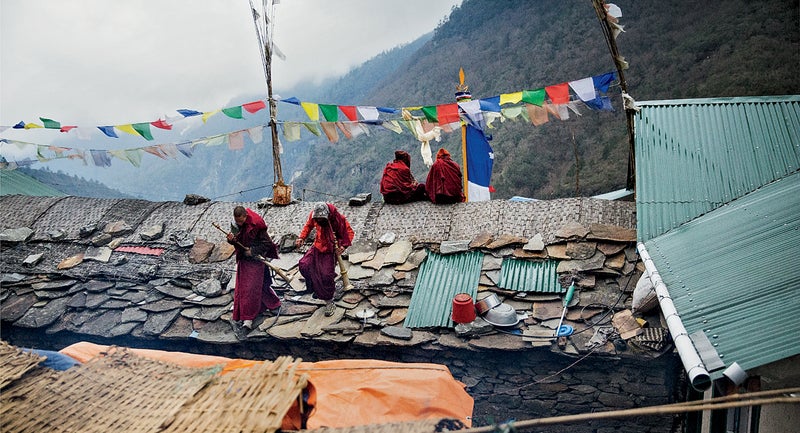
For the 1995 cremation, they chose a flat spot among a garden of chortens below the outpost of Lobuche. The memorial spot, on the Khumbu GlacierŌĆÖs terminal moraine, now also includes engraved cairns for Scott Fischer, Alex Lowe, and other notable climbers whoŌĆÖve since died in the Himalayas.
ŌĆ£When youŌĆÖre burning bodies, itŌĆÖs real,ŌĆØ said Burleson, wearily describing the gruesome practicalities of ritual body disposal in a cold, barren world. ŌĆ£It takes a lot of wood. You have to crush the skull and puncture the stomach, or else you just get a glowing bubble in the fire.ŌĆØ
In the Buddhist religion, the spirit undergoes bardo, a transitional period after death that lasts 49 days. During bardo, the soul gradually moves away from the body and toward reincarnation in one of the realms inhabited by gods, demigods, humans, animals, hungry ghosts, and devils.
The body lies in the home for three days before cremation. The entire village gathers at the deceased personŌĆÖs house, where a kitchen tent is built and neighbors bring food and cash to help out. The family distributes gewa on behalf of the dead, handing out rice, butter, and money to anybodyŌĆöeven a reporterŌĆöwho shows up. The gifts arenŌĆÖt meant to please the receiver but to improve the rebirth prospects of the dead.
On April 29, at Mingma NuruŌĆÖs house in Phurte, I witnessed the gravity of the ceremony. Thirteen monks filled the house, meditating and praying during an event that was held under a new moon, to amplify goodwill. The belief is that the spirit lingers close to the body for three weeks. Any Sherpa climber lost in a crevasse is thought to have a restless ghost loitering nearby.
ŌĆ£The family has to talk near the body,ŌĆØ said Pemba Tenzing. ŌĆ£Before it we placed his favorite food, tsampaŌĆØŌĆöroasted flour mixed with broth to create a dumpling-like ball.
Mingma NuruŌĆÖs young wife, Dawa Jangmu, from Ylajung, sat in stunned silence on the floor of the kitchen, amid the commotion of monks and relatives. Widows describe this state in a way thatŌĆÖs always been translated to me as ŌĆ£paralysis.ŌĆØ She and Mingma Nuru hadnŌĆÖt been formally married, and his mother was listed as the beneficiary on his insurance form.
ŌĆ£I donŌĆÖt know what IŌĆÖll do,ŌĆØ Dawa Jangmu said quietly. She had also lost her brother Tenzing Chottar.
Lakpa Rita helicoptered back to Everest Base Camp in the early afternoon of Saturday, April 19. The last of the body-recovery efforts had just concluded. Three men hadnŌĆÖt been found and likely wonŌĆÖt be for a long time. Like most victims of the Icefall, their bodies will gradually be moved, churned, and broken down by the currents of ice. Body parts and gear will rise up and melt out eventually, a femur emerging from the snow here, a glove there.
ŌĆ£I got a call from Jagged GlobeŌĆÖs sirdar, Pasang Tenzing, and he said we needed to make a report about the missing Sherpas,ŌĆØ Lakpa Rita said. ŌĆ£If you say ŌĆśmissing,ŌĆÖ sometimes itŌĆÖs hard to get insurance.ŌĆØ They had to gather eyewitness reports saying that the men werenŌĆÖt lost but entombed.
That afternoon, Lakpa Rita met the other sirdars at the camp of the Sagarmatha Pollution Control Committee. This was the first in a series of encounters that gradually spelled the end of the 2014 climbing season on EverestŌĆÖs south side. It started with people giving statements to a government liaison officer about the lost men.
ŌĆ£Then the meeting turned to a different subject,ŌĆØ Lakpa Rita said. ŌĆ£A lot of other Sherpas and sirdars were bringing their own points, saying, We need to do this. We have to do that.ŌĆØ Specifically, the mood in the room was that everybody needed to go home.
╠²
ŌĆ£They decided to have a meeting the next morning at nine with the expedition operators,ŌĆØ Lakpa Rita said. ŌĆ£They asked me to present, but I said I canŌĆÖt, because a lot of them were saying we should go home. I told them it was a big loss for me but I couldnŌĆÖt tell people to go home. Everybody should make their own decision. IŌĆÖm pretty sure IŌĆÖd already made my decision, but I didnŌĆÖt tell my climbersŌĆØŌĆömeaning the Discovery crew and 12 Alpine Ascents clients. ŌĆ£But I told my Sherpas, ŌĆśThis is it. WeŌĆÖre not going back up.ŌĆÖŌĆēŌĆØ
What followed was a historic rift in Base Camp that was soon being debated around the world. On every media platform, people weighed in about the fraught business of hiring porters to help Westerners reach the summit, with a clear majority deciding that it was fundamentally wrong for Sherpas to shoulder so much of the risk on behalf of guided clients who would never make it without massive human support.
ŌĆ£Sad day with SherpasŌĆÖ deaths in #EverestAvalanche; died prepping the route for rich Western climbers,ŌĆØ read a typical tweet in the days following the disaster. In a , Dhamey Tenzing Norgay, the avalanche was compared to last yearŌĆÖs Rana Plaza garment-factory collapse in Bangladesh, which killed more than 1,100 workers. ŌĆ£The loss underscores a growing divide,ŌĆØ the piece said, ŌĆ£between expedition members, who pay top dollar to reach the summit, and their highly skilled Sherpa guides, who are paid a relative pittance and too often are taken for granted.ŌĆØ
Others pointed out that everybody who sets foot on Everest is taking a gambleŌĆöand that, if the avalanche had happened later in the season, all the victims might have been guided clients. ŌĆ£They know the risks,ŌĆØ , noting that ŌĆ£Sherpas are not dragooned onto Everest.ŌĆØ IMG guide Mike Hamill, , sought to explain EverestŌĆÖs labor problems as a private matter by blaming them on ŌĆ£media sensationalismŌĆ” perpetrated by persons outside the Everest mountaineering community.ŌĆØ
HamillŌĆÖs take, that the climbers and Sherpas share a mutual destiny defined by the ŌĆ£brotherhood of the rope,ŌĆØ is what many Western guides feel in their hearts, but it falls short of reality when you consider how much more time Sherpas spend roped to their actual brothers than to Westerners and how many more trips they make through the Icefall.
Looking back on it now, the events of the week following the avalanche are probably best described as a complicated mix of posturing and political theater that reflected how much was at stake, for the Western climbers whoŌĆÖd paid their outfitters $18,000 to $90,000 (nonrefundable) to attempt the climb, for their guides, and for the Sherpas whose lives and livelihoods were in jeopardy.
Among the first to find themselves struggling with the explosive politics of Base Camp were the Discovery Channel and 39-year-old Joby Ogwyn, the Louisiana-bred adventurer who had done a months-long national media blitz leading up to what was supposed to be a live, televised wingsuit jump expected to attract tens of millions of viewers.
The Discovery Channel had invested heavily in the stunt, and because the prime-time broadcast was going to be live and would use multiple cameras, it required an enormous amount of satellite equipment and manpower. Broadcast crews were to be positioned at the summit of 27,940-foot Lhotse, at EverestŌĆÖs Camp II, and also on the summit itself, at 29,035 feet. For these tasks, Discovery had hired AAI guides Ben Jones and Andy Tyson to assist the high-altitude cameramen, which included Scottish climbers Ed Wardle and Joe French and Jackson HoleŌĆÖs John Griber.
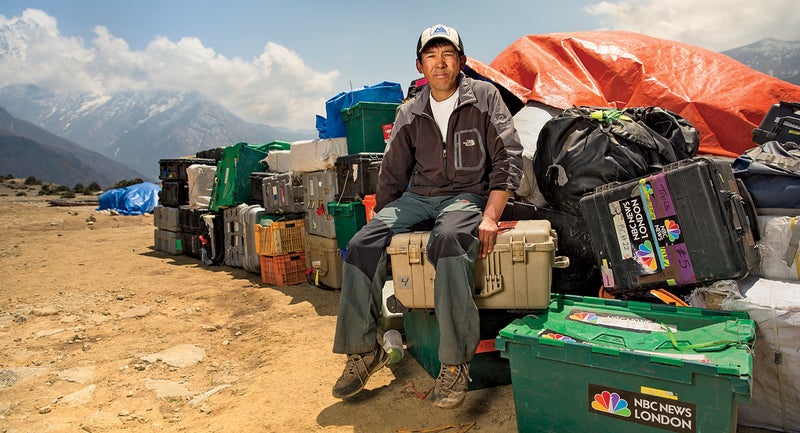
But by the evening of Friday, April 18ŌĆöthe day of the avalancheŌĆömembers of the Discovery crew began to send conflicting messages about what would or should be done next. ŌĆ£For something like this to happen makes the whole thing seem pointless to me,ŌĆØ Wardle told the UKŌĆÖs Channel 4 News that night. ŌĆ£The agreement here among everybody at Base Camp is that the mountain is closed for now. Nobody will be climbing.ŌĆØ
That same night in Base Camp, Madison MountaineeringŌĆÖs Jangbu spoke with Ogwyn, who told him the wingsuit stunt wasnŌĆÖt important compared with the loss of life. ŌĆ£Whatever you guys decide,ŌĆØ Jangbu recalled Ogwyn telling him, ŌĆ£I will support that decision.ŌĆØ
The next morning, though, Ogwyn seemed to reverse field, posting a note on Facebook saying, in part, that he was not giving up. ŌĆ£Today is a brighter day,ŌĆØ he wrote. ŌĆ£We are staying on the mountain to honor our friends and complete our project.ŌĆØ
Behind the scenes, his cameramen were furious, as I learned after I arrived in Kathmandu on April 22. ŌĆ£HeŌĆÖs going to fly off the summit to honor his dead Sherpas? ThatŌĆÖs pathetic,ŌĆØ Griber told me when I ran into him at a rooftop restaurant. ŌĆ£How many people have to die on Everest for you not to jump?ŌĆØ Wardle insisted that Ogwyn cancel his project, a call that Ogwyn claimed wasnŌĆÖt his to make. ŌĆ£ThatŌĆÖs a decision thatŌĆÖs going to get made in New York,ŌĆØ he told me when I talked to him in June.
On the 19th, a threat arrived via Base CampŌĆÖs oldest, most resilient communication system: the rumor mill. ŌĆ£It was basically that if Joby didnŌĆÖt leave, something like what happened last year might happen again,ŌĆØ said OgwynŌĆÖs guide, Garrett Madison. He was referring to a fight that took place at Camp II in 2013 between several Sherpas and three professional European climbers, whoŌĆÖd angered the Sherpas by climbing above them while they were fixing line on the Lhotse Face.
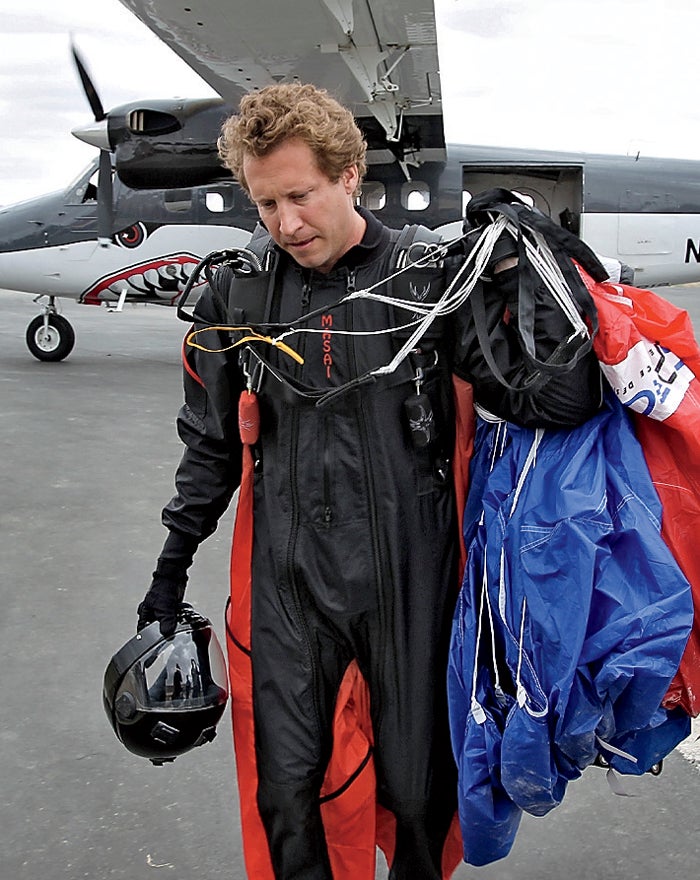
ŌĆ£It wasnŌĆÖt like I was being run out of Base Camp, though I took it seriously,ŌĆØ Ogwyn said of the threat. He and Madison left Base Camp that day and walked to Gorak Shep. In a sign of the rising discord, a crew member from NBC changed the name of their local wireless network to ŌĆ£He ran away!ŌĆØ
The broadcastŌĆÖs executive producer, Howard Swartz, had just arrived at KathmanduŌĆÖs Hotel Yak and Yeti, and on April 20, Ogwyn flew from Gorak Shep to Kathmandu to meet him. The decision that emerged from their talk was clear: no go. That day, Discovery released a two-sentence statement saying that, in light of the tragedy and out of respect for the dead, .
ŌĆ£His heart was in the right place,ŌĆØ Swartz told me on April 23, of OgwynŌĆÖs short-lived attempt to keep the project alive. ŌĆ£But, really, it was an easy decision.ŌĆØ Then his tone softened, and it was clear how shocked he was by what had happened to the Sherpas. ŌĆ£I had a binder of contingencies this thick,ŌĆØ he said, opening his hand wide enough to grip a pint glass. ŌĆ£This wasnŌĆÖt in it.ŌĆØ
Discovery Channel, which had already secured airtime for its special, shifted gears. NBC crew members still in Base Camp shot a 90-minute documentary about the avalanche, which aired on May 4. Ogwyn set up a fund for the families of the 16 dead that eventually raised about $100,000. He left Nepal on April 24 and went on a media tour, giving a series of interviewsŌĆöalternately informative, heartfelt, and tone deafŌĆöthat made it obvious he intends to go back. In New York, at the end of April, he told a blogger that Sherpas ŌĆ£are far from slavesŌĆØ and that he would return to Nepal in the spring of 2015 to make his jump. ŌĆ£I have done a lot more producing and setting up lecture[s], and a lot is based on this,ŌĆØ he said. ŌĆ£Next spring will be my opportunity.ŌĆØ
When I spoke with Ogwyn, he confirmed that heŌĆÖs going back next year, and he probably wonŌĆÖt have any trouble finding an outfitter to support his effort. Meanwhile, he was still angry with Wardle: ŌĆ£Ed Wardle, my cameraman, just couldnŌĆÖt keep his damn mouth shut, which is incredible, because heŌĆÖs a cameraman and has no business being on TV, much less challenging me in my expertise.ŌĆØ
ŌĆ£The showŌĆÖs about me,ŌĆØ he continued. ŌĆ£The show was about a guy named Joby Ogwyn jumping off the tallest mountain in the world. Simple as that.ŌĆØ
The purpose of the gathering at Base Camp on Sunday, April 20, was never in doubt. It was an organizing meeting for a labor force, many of whom felt aggrieved. The 21-person group assembled inside the tent of the were mostly Sherpas, along with two low-level government liaison officers. A few Westerners were also present, including Dave Hahn, Canadian Tim Rippel of , Russell Brice, and Greg Vernovage of IMG. A Nepali outfitter named Dawa Steven, who co-owns , helped translate for the Westerners.
ŌĆ£The Sherpas were angry but peaceful,ŌĆØ said Lakpa Rita. The government had offered to pay the families of the dead an additional $400 on top of their $10,000 insurance payments, which was taken as an insult. ŌĆ£The money wouldnŌĆÖt meet the cremation expenses,ŌĆØ said Pasang Bhote, a Sherpa from the Sankhuwasabha district, near Makalu, who was working for a small local outfitter called Seven Brothers.
Not everybody found the meeting so cordial. In an account written after the season ended, Brice recalled that ŌĆ£a brawl almost broke out between the liaison officers and some of the fired-up Sherpas, and it took the efforts of the Western members present to calm things down.ŌĆØ
The obvious leader for the workers would have been Dorjee Khatri, Garrett MadisonŌĆÖs late sirdar. He was vice president of the Union of Trekking Travels Rafting Workers Nepal and a member of the middle-left United Marxist-Leninist Party, which in 2005 had formed a coalition with the center-left Nepali Congress party and several hard-left Maoist parties to form the CPN-UML and replace NepalŌĆÖs monarchy with its current Constituent Assembly. Dorjee KhatriŌĆÖs death politicized the tragedy almost by default. The following day, union leaders and NepalŌĆÖs CPN-UML prime minister from 2009 to 2011, Madhav Kumar Nepal, attended Dorjee KhatriŌĆÖs funeral in Kathmandu. Party and union members draped his body in the flags of their respective organizations.

With Dorjee Khatri dead and the government paying attention, the Sherpas decided to air some grievancesŌĆöabout the dangers they face and about the modest money they make relative to the $3.4 million the government of Nepal collects from the climbing companies each year. Pasang Bhote, who had worked with Dorjee Khatri at ╣·▓·│į╣Ž║┌┴Ž Consultants for three Everest seasons, became the most prominent voice of the Sherpas, though he bristles at being called the leader of a movement or a Maoist, as several local news outlets dubbed him in the weeks after the avalanche.
ŌĆ£We were not affiliated to any parties,ŌĆØ he said. ŌĆ£Our sole understanding was we were laborers and the government had insulted us, and it was wrong.ŌĆØ Pasang Bhote came to the meeting with a list of demands for the government. After he read them off, others began adding to the list, and a liaison officer dutifully scribed the results into what became known as the .
Sumit Joshi, who co-owns Himalayan Ascent and has lived in Australia for the past 15 years, explained the demands to the Western guides present. The charter called, in part, for a second doubling of accidental-death insurance payoutsŌĆöcoverage was increased in the spring of 2013ŌĆöto about $22,000. The Sherpas wanted $10,000 in disability coverage for workers permanently injured in the mountains, a $1,000 funeral stipend, a permanent relief-and-education fund carved from 30 percent of the governmentŌĆÖs permit royalties, a plot of land in Kathmandu to build a memorial to the 16 dead, and official recognition of the cursed season as a lo nak (ŌĆ£black yearŌĆØ), by making April 18 a national holiday. Most important to the Westerners present, the charter stated that no team should be prevented from climbing.
ŌĆ£One of the points was that each expedition would decide on its own whether to continue, and that nobody would be pressured by those not continuing,ŌĆØ Dave Hahn told me. ŌĆ£That was one of the things we were agreeing to. And I think by the following day I heard that list read out to a chanting crowd, and it had been changed to: ŌĆśAnd none of us will climb this season.ŌĆÖŌĆēŌĆØ
Almost everybody inside the tent signed the original 13-point charter. ╣·▓·│į╣Ž║┌┴Ž, a crowd of Western guides and Sherpas had gathered. Pasang Bhote stood and read out the list. He and Sumit Joshi became the town criers, with Pasang orating and Sumit translating. ŌĆ£There was no microphone,ŌĆØ Pasang said. ŌĆ£I had to shout.ŌĆØ
ŌĆ£Obviously, because itŌĆÖs political and everything, Pasang Bhote also said to people, ŌĆśDo you want to continue or not continue?ŌĆÖŌĆēŌĆØ Sumit Joshi later explained. ŌĆ£And everybody yelled, ŌĆśYeah, we donŌĆÖt want to continue!ŌĆÖŌĆēŌĆØ
Sherpas from outside began filing into the tent to add their names to the document. An additional 274 signed the paper, which threatened protests if the demands werenŌĆÖt met. Pasang Tenzing, the secretary of the , delivered a copy of the charter to the in Kathmandu.
The document stipulated that any expeditions whose Sherpas wanted to continue could continue, but thatŌĆÖs not how things played out. ŌĆ£After the avalanche, people were really scared,ŌĆØ Sumit Joshi said. ŌĆ£Underneath, I donŌĆÖt think there was one single Nepali in Base Camp who wanted to go up again. Whatever these Western leaders are saying, thatŌĆÖs all false, I think.ŌĆØ
Initially, his assessment was probably right. ŌĆ£Their relatives were telling them, DonŌĆÖt go up there,ŌĆØ Hahn said. ŌĆ£Two days afterward, my guys didnŌĆÖt feel like climbingŌĆöquite understandablyŌĆöbut that changed a few days later, to the point where my Sherpas wanted to climb again.ŌĆØ
This matched a pattern that several other Western outfitters described to me. But the movement to keep going was outweighed by stronger pressures to go home.
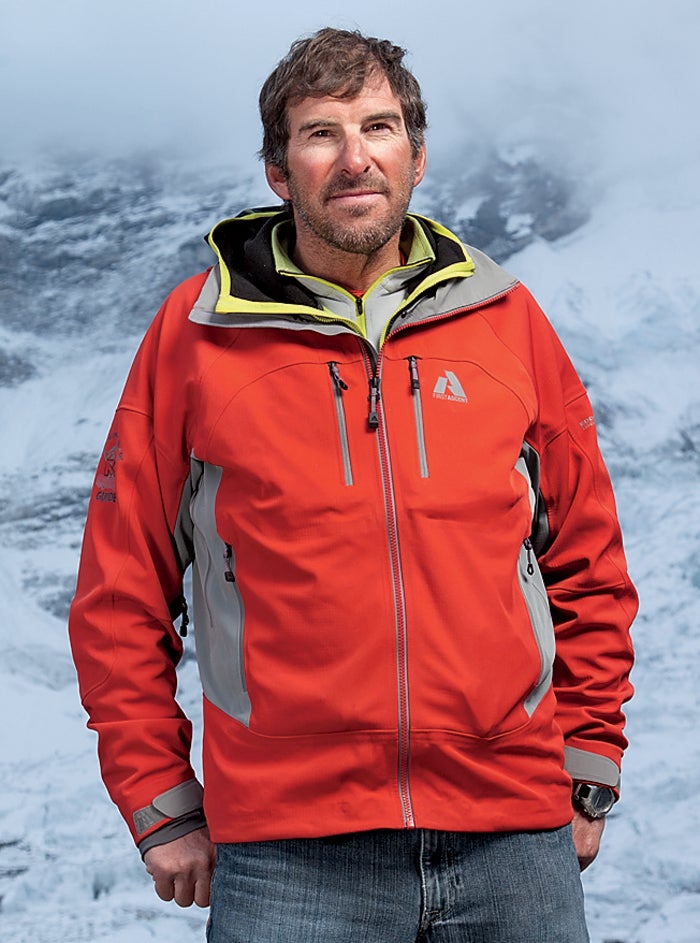
On April 22, with the body-recovery effort officially called off, everybody in Base Camp gathered for a memorial puja. Between 400 and 500 people were on hand. Many Sherpas had returned to their villages, but many were still there. By all accounts, the service went smoothly. Juniper was burned, tears fell, black tea was offered, and prayers were made.
Afterward, the crowd lingered. ŌĆ£People were angry more because there hadnŌĆÖt been any response from the government,ŌĆØ said Sumit Joshi. Fist-pumping and chants calling for the season to end started up. Then came the source of the Base Camp talk about threats: somebody in the crowd shouted, ŌĆ£If anybody goes up, we might break their leg with an ice ax!ŌĆØ
IMGŌĆÖs head guide, Greg Vernovage, was there with his companyŌĆÖs longtime sirdar, Ang Jangbu. ŌĆ£Jangbu and I were together near the end of the puja,ŌĆØ he said, ŌĆ£and someone said that if thereŌĆÖs climbing, they would go down to Kathmandu and burn the offices and homes of the local operators.ŌĆØ
By Wednesday, April 23, things had gotten worse. Base Camp was awash in gossip that Nepalese troops would soon arrive to restore order. After some backroom haggling that involved Brice and Altitude Junkies' Phil Crampton, the government finally announced that it would send tourism minister Bhim Prasad Acharya by helicopter to Base Camp to try and ease tensions.
That evening, a group of local and Western guides, most of them certified by the International Federation of Mountain Guides Associations (IFMGA), met at the Sagarmatha Pollution Control Committee camp to discuss conditions on the mountain and how they might keep the season alive.
ŌĆ£As we went round the circle expressing our safety concerns,ŌĆØ Alpenglow Expeditions owner Adrian Ballinger told me in a text message sent shortly after the meeting, ŌĆ£much less was about Icefall dangers and much more was about Sherpas.ŌĆØ
The meeting broke up, and that night several expeditions announced that they were pulling the plug. Canadian Tim Rippel, owner of Peak Freaks, canceled his climb, : ŌĆ£There is talk of retaliation on Sherpas who want to continue, and IŌĆÖm not about to be part of this or put any of my staff or clients in danger.ŌĆØ
After interviewing numerous outfitters, sirdars, and other Sherpas, I was unable to find any specific threats beyond those shouted at the April 22 puja. But the environment was still hostile. ŌĆ£No one came to me directly to challenge me or threaten me to my face,ŌĆØ Asian TrekkingŌĆÖs Dawa Steven wrote in an e-mail. ŌĆ£I only heard through second-hand sources.ŌĆØ
IMG client Ellen Gallant, a cardiologist from Salt Lake City who trained and saved for 12 years and recently quit her job to climb the mountain, said she saw the effect that the chanting had on her sirdar. ŌĆ£Jangbu was clearly upset and crying about this,ŌĆØ said Gallant, who like most Western clients found herself out roughly $50,000 that her insurer, Travelex, was unwilling to cover. ŌĆ£Ang Jangbu, if you know him, is a stoic man. Nothing upsets him.ŌĆØ
As for herself, sheŌĆÖs still coming to grips with the collapse of a goal sheŌĆÖd worked toward for years. ŌĆ£I know itŌĆÖs a small thing in the midst of the rest of the tragedy, but I feel like thereŌĆÖs a hole in my heart,ŌĆØ said Gallant, who turned 48 on May 12. ŌĆ£For a decade, I imagined standing on the summit of that mountain on my birthday.ŌĆØ
Without exception, each of the Western outfitters that wanted to stay and climb believed that they had a special relationship with their Sherpas. ŌĆ£We have a full complement of loyal Sherpas who we have worked with for years,ŌĆØ British outfitter Tim Mosedale . ŌĆ£They have all returned after the tragedy and even the ones who have lost brothers who were working for other teams are willing to continue.ŌĆØ
But some Sherpas obviously were frightened. In recent years, a new crop of local, Kathmandu-based outfitters has grown up with a goal of owning the entire Everest production rather than just the load-carrying part. The rift in 2014, which is the same one that arose during last yearŌĆÖs Camp II fight, is between younger Sherpas who are training to be independent mountain guides and older Sherpas who have done well by making a career working for the top Western outfitters.
Sherpas from the local outfitters who were at the center of this yearŌĆÖs uproarŌĆöones who were willing to speak at all, that isŌĆöclaimed to have no idea that any of this was happening. When I asked Tashi Sherpa, the director of , whether there was some sort of Sherpa-enforced climbing moratorium, he said, ŌĆ£I donŌĆÖt know about that, man. That is a personal decision if you want to climb up. But the route is not fixed.ŌĆØ
Ultimately, what was going on was both mind-numbingly complicated and also pretty simple. There was no blanket Sherpa or Western position, but rather a messy soup of grief, labor politics, service-industry customer relations, and government posturing that caught many experienced guides by surprise. While mountain climbers tend to be both liberal and freedom loving by nature, the realities of collective bargaining, especially done informally and without clear leadership, must have come as a shock.
An American woman named Cleo Weidlich vowed to complete her solo climb of Lhotse, proclaiming on Facebook, ŌĆ£I refuse to give in to the pressures of the Everest mafia.ŌĆØ
Another factor was a famous Sherpa tendency to avoid conflictŌĆöeven if conflict is what they desired. ŌĆ£Most of them are scared of dying but also of losing their jobs,ŌĆØ explained Nyima, a climber who owns Cafe de 8848 in Namche Bazaar. ŌĆ£YouŌĆÖre brought up in a culture where you treat Westerners with great hospitality.ŌĆØ Some of those men were willing to simply say that they didnŌĆÖt want to climb or that their families were terrified for their safety. But more of them probably needed a way to save face about not wanting to go up. Blaming the threats of others, real or exaggerated, provided that.
ŌĆ£Some of the sirdars used it as an excuse. There was no renegade Sherpa group going camp to camp threatening people,ŌĆØ said Sumit Joshi. ŌĆ£If anyone can prove that, you know, that person should be in jail.ŌĆØ
Even as the 2014 season headed toward final collapse, there were undoubtedly plenty of Sherpas willing to climb. But thereŌĆÖs no such thing as a partial labor strike. ŌĆ£ItŌĆÖs absolutely real, the social pressure thatŌĆÖs going on not to cross the line,ŌĆØ said David Morton, a cameraman and former Alpine Ascents guide who was in Base Camp working on the . ItŌĆÖs just that some Western outfitters didnŌĆÖt recognize what they were dealing with. ThatŌĆÖs because their workers told them it wasnŌĆÖt a strike, a semantic feint in a country famous for relentless deference.
So rather than appeal to their employers for better compensation and benefits, the Sherpas stopped working and aimed their protest at the governmentŌĆöa dysfunctional body that has seen six different prime ministers since its democratic reform in 2008.
And perhaps owing to those close relationships with their own employees, many outfitters believed what they were being told. ŌĆ£The Sherpas state that the situation is between them and the government,ŌĆØ Mosedale wrote on his blog. ŌĆ£The government are stating that the mountain is open for business. We are going round and round in circles.ŌĆØ
The loop finally closed on Thursday, April 24, when I hitched a ride to Base Camp to witness the dayŌĆÖs events. I ran into Madhu Sudan Burlakoti, joint secretary of NepalŌĆÖs Ministry of Culture, Tourism, and Civil Aviation. As he waited to board his helicopter, he assured me that the Sherpas were ŌĆ£ready to climb.ŌĆ” They are going to climb.ŌĆØ
My main takeaway from this was that nobody wanted to be seen as responsible for shutting down the mountain. For the government, doing so might have led to calls to refund the permit fees it had collected. The Sherpas, meanwhile, worked in one of the highest-paying industries in Nepal, though the cost of living in the Khumbu region has also risen sharply as a result of tourismŌĆÖs success there.
When Minister Bhim Prasad Acharya and his entourage arrived in Base Camp around 10 a.m., a crowd had already gathered and was in a heckling mood. He addressed them while taking in oxygen through a nose tube and looking frail. ŌĆ£Please sit, please sit,ŌĆØ a handler said.
ŌĆ£Put some more chile in his soup!ŌĆØ somebody shouted.
ŌĆ£Turn off his oxygen and see if he notices!ŌĆØ somebody else yelled, to much laughter.
The minister spoke for an hour, saying that the government had agreed to let the expeditions roll their $10,000 permits into another year, a step that would make the shutdown a little less costly for clients. He told them he would put their 13-point charter in front of the cabinet. It was hardly a capitulation, but heŌĆÖd shown up, and that was something.
After Acharya left, the expeditions began packing up. In an ironic turn, the lone group of Sherpas actually employed by the government, the Icefall Doctors, were the only ones required to stay, though they stopped maintaining the route. Climbing ceased almost entirely, but not quite. An American woman named Cleo Weidlich vowed to complete her solo climb of Lhotse, which shares the route up to Camp III with Everest.
ŌĆ£I refuse to give in to the pressures of the Everest mafia,ŌĆØ she at the end of April. During the second week of May, she and Wang Jing, owner and director of a large Chinese outdoor-gear retail chain, . Jing made it to the top of Everest in late May, but Weidlich abandoned her Lhotse attempt, deciding that you canŌĆÖt truly say youŌĆÖve climbed a mountain if youŌĆÖve flown halfway up it.
After the helicopter assists to Camp II, the government launched an investigation into the lawfulness of the flights. As the politics of Base Camp played out in April, several outfitters, especially HimExŌĆÖs Russell Brice, made their case that helicopters should be used to ferry gear over the Khumbu Icefall. ItŌĆÖs a move that could lead to fewer Sherpa deaths. But such a policy might also result in less work for them, more helicopter crashes, and widespread condemnation from climbing purists who think the mountain has already been brought low for the sake of commercial clients.
In the aftermath of the avalanche, half a dozen organizations raised nearly a million dollars to benefit the families of the 16 Sherpas who died. In addition to OgwynŌĆÖs $100,000, a group of photographers from National Geographic and ╣·▓·│į╣Ž║┌┴Ž raised $450,000, and there were major efforts by the , the , the , and a Japanese climbing team.
Most of the charities have pledged that all of the funds will directly benefit the families of the men who died. I was involved with the photographersŌĆÖ effort, and half of that will go to families who lost climbersŌĆöeither this year or in years past. The rest will pay for programs at the , which trains Sherpas in safety and mountain rescue.
In the wake of past accidents, like those in 1996 and in 2012ŌĆöwhen six clients and guides died over a two-day periodŌĆöclimbing Everest has only got more popular, since risk is part of the allure. But the impact of 2014 may be different, in part because of the political fault lines revealed so starkly in Base Camp. People who are saving up for the experience of a lifetime may have second thoughts about forking over upwards of $100,000, after airfare and gear purchases, when thereŌĆÖs no guarantee theyŌĆÖll even set foot on the mountain.
So far, very few climbers have gotten any money back. The outfitters had already spent most of it moving equipment onto the mountain and paying guides and workers. And while itŌĆÖs true that climbers may have a second chance to use their permits in the next five years, theyŌĆÖll also have to pay the other Everest bills again.
And make no mistake: some climbers are angry. ŌĆ£We have been screwed by the Sherpas,ŌĆØ said Damien Francois, a 49-year-old Belgian who paid $28,000 to climb with an outfitter called . ŌĆ£We are the hand that feeds the whole business, so without us, no operators. Without operators, no jobs for the Sherpas or their workers. But then weŌĆÖre told, ŌĆśGo home and come back next year.ŌĆÖ ŌĆØ Francois, who says heŌĆÖs writing a book about the 2014 ŌĆ£mess,ŌĆØ said he tried to speak out about all this at Base Camp but was told to shut up.
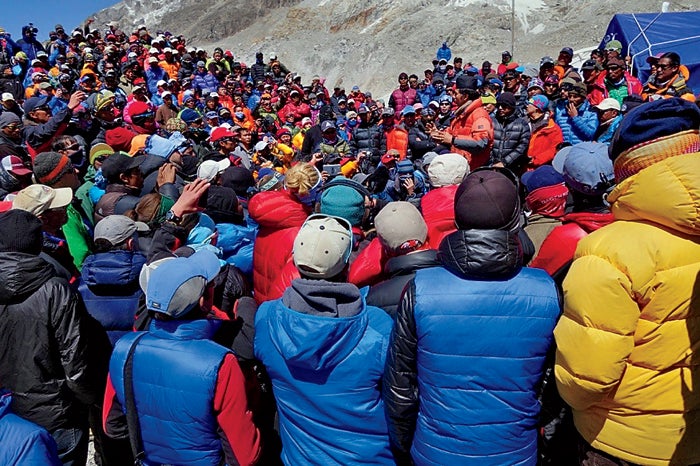
Among outfitters, the talk has already begun to shift from how to care for the families of the fallen to how to prevent more Sherpa deaths in the future. Besides using helicopters to shuttle gear to Camp II, it has been suggested that Camp II become a lot less luxurious, so thereŌĆÖs less stuff to haul back and forth. Many of the dead men in this yearŌĆÖs tragedy were carrying tents whose poles were big enough to be fashioned into makeshift stretchers. Adding helicopters to haul gear could change the equation, but whether that happens is still being debated.
Another way to reduce the number of Sherpas on the route is to restrict the number of permitted climbers. American alpinist Conrad Anker has suggested raising the bar by making a successful climb of another big peak in NepalŌĆölike Makalu or BaruntseŌĆöa prerequisite for attempting Everest. That move might actually make money for the government, but it would put Everest even further out of reach for all but the wealthiest clients.
Meanwhile, the quality of maintenance in the Icefall route has come into question. Several guides I spoke with, including Hahn and Burleson, want to see some accounting for the $500 per personŌĆöor roughly $175,000ŌĆöthat outfitters annually pay the Sagarmatha Pollution Control Committee to fix the route. Hahn believes the level of route fixing and maintenance has not kept pace with increased traffic on the mountain. And the committee readily acknowledges that it uses a lot of that money for maintenance elsewhere in the national park that contains Everest.
As for the 13-point charter, the that it will require $15,000 in life-insurance coverage for climbing Sherpas (up from the current $11,000), but outfitters could elevate that to $20,000 at a cost of only about $200 per worker. Beyond that, itŌĆÖs unlikely the government will forgo any of its royalties for the sake of a Sherpa relief fund. In the end, EverestŌĆÖs economic ecosystem is as fragile as its natural one. Unless people are suddenly willing to pay half a million dollars to climb it, the steady pull of gravity will be toward the status quo.
Last January, before any of this had happened, Lakpa Rita tried to quit climbing. The spring of 2013 was also a bad year on Everest, mostly because of the fight that took place at Camp II. ŌĆ£After that incident, I told a lot of people I wasnŌĆÖt going to climb anymore,ŌĆØ he said. The mood had changed. He didnŌĆÖt understand what was driving some of the younger Sherpas anymore. In the initial aftermath of that fight, many people rushed to the defense of the Sherpas, whoŌĆÖd been shamed when the Europeans climbed past them on their home turf. But in the year since then, many people have begun to suspect that there is something more going on.
The great sirdars of the nineties and early aughtsŌĆömen like Lakpa Rita, IMGŌĆÖs Ang Jangbu, ╣·▓·│į╣Ž║┌┴Ž ConsultantsŌĆÖ Ang Dorjee, Rainier MountaineeringŌĆÖs Lam Babu, and HimExŌĆÖs Phurba TashiŌĆöhave lost some of the authority they once had to dictate decisions in Base Camp. Many young Sherpas are not mere porters anymore. A dozen have earned their IFMGA certifications (a long, expensive process that gives a guide the ability to work anywhere in the world and command a higher wage) and work for local outfitters based in KathmanduŌĆÖs touristy Thamel neighborhood. They have their own cliques and hierarchies.
ItŌĆÖs a rift thatŌĆÖs likely to deepen. Local outfitters and ascendant young Sherpas will continue to assert themselves as the government pretends that it has everything under control. And established Western outfitters, who still bring the best logistics, most qualified clients, and most experienced guides into the country each year, will struggle to compete with those local outfitters, who want a bigger piece of the pie but are also consistently the worst at taking care of their workers and their families after an accident. Many local companies charge their clients less than $30,000 for an Everest trip.
For Lakpa Rita, these shifts finally prompted an attempt, earlier this year, to find another way to make a living. The man whose image covers an area the size of a handball court on the side of the Sherpa ╣·▓·│į╣Ž║┌┴Ž Gear headquarters building in Kathmandu, began looking for work in Seattle.
ŌĆ£I drove an Uber,ŌĆØ he said. ŌĆ£I also tried landscaping.ŌĆØ He applied for a job as a mail carrier. ŌĆ£They hired me, but the next day I said IŌĆÖm not going to do it.ŌĆØ
And so he didnŌĆÖt. Instead, he returned to Everest in 2014. ŌĆ£I mean, this is what I know. This is what IŌĆÖm good at. And this is what I enjoy doing,ŌĆØ he said. Plus, his neighbors in Thame count on him for work.
On that black Friday morning in the Icefall, as Lakpa Rita raced to the aid of the boys heŌĆÖd watched grow up, his cell phone rang. He stopped and answered it. News of the avalanche had already reached Seattle, and his wife, Fur Dikee Sherpa, was on the line in tears.
She said, ŌĆ£No more Everest. No more K2. We can survive without climbing. You donŌĆÖt need to climb. I donŌĆÖt want to lose you.ŌĆØ
ŌĆ£I told her yes, I wonŌĆÖt climb anymore,ŌĆØ Lakpa Rita said. But then he hedged, as Everest climbers always do. ŌĆ£I will come back just to manage the Base Camp.ŌĆØ


